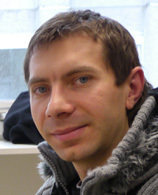Humboldt fellowship holder to reinforce IPP’s heating team
Model calculations for the plasma heating of the ITER international fusion test reactor

Since his master’s thesis Serhiy Mochalskyy has been active in plasma physics and fusion research. The objective is to develop a power plant to derive energy on the same principle as that of the sun – from fusion of atomic nuclei. The ITER test device, now being built at Cadarache (France) as an international cooperation project, is to show for the first time that an energy‑generating fusion fire is possible. This requires that the fuel, a hydrogen plasma, be confined in magnetic fields and heated to an ignition temperature exceeding 100 million degrees.
The bulk of the heating is accomplished by fast hydrogen atoms injected into the plasma. The method is being adapted at IPP to ITER’s high requirements: A novel high‑frequency ion source first produces negatively charged hydrogen ions, which are then accelerated to a high velocity by electric fields. After the charges are stripped off, a high‑energy beam of neutral atoms penetrates the magnetic field cage and sweeps into the plasma.
Serhiy Mochalskyy will use a computation model to find out how the ions produced can be extracted as efficiently as possible from the particle mix in the ion source. The complex computer code he has developed depicts the collisions of the atoms, ions and electrons in the source and likewise the influence exerted on them by the fields applied. He will check the performance of his computation model by making comparative measurements on IPP’s BATMAN ion source test rig and then on ELISE, at present the world’s largest test rig of its kind. The aim is to find the optimum setting of the ion source for ITER.
Background: Humboldt Research Fellowship for Postdoctoral Researchers
The Alexander von Humboldt Foundation awards fellowships to outstandingly qualified young scientists from abroad to enable them to carry out a long term research project in cooperation with a research institution in Germany.
